-
 Bitcoin
Bitcoin $82,725.6690
-3.02% -
 Ethereum
Ethereum $1,860.4950
-1.79% -
 Tether USDt
Tether USDt $0.9995
0.00% -
 XRP
XRP $2.1261
-4.12% -
 BNB
BNB $606.1318
-3.65% -
 Solana
Solana $126.1586
-4.04% -
 USDC
USDC $1.0000
0.00% -
 Dogecoin
Dogecoin $0.1721
-5.33% -
 Cardano
Cardano $0.6750
-4.08% -
 TRON
TRON $0.2340
1.07% -
 Toncoin
Toncoin $3.7056
-6.80% -
 Chainlink
Chainlink $13.8095
-4.02% -
 UNUS SED LEO
UNUS SED LEO $9.5880
-1.23% -
 Avalanche
Avalanche $20.1995
-1.05% -
 Stellar
Stellar $0.2694
-2.48% -
 Shiba Inu
Shiba Inu $0.0...01285
-4.19% -
 Sui
Sui $2.3213
-8.98% -
 Hedera
Hedera $0.1708
-7.14% -
 Litecoin
Litecoin $86.7167
-1.56% -
 Polkadot
Polkadot $4.1073
-5.03% -
 MANTRA
MANTRA $6.2984
-0.89% -
 Bitcoin Cash
Bitcoin Cash $308.0076
-1.14% -
 Bitget Token
Bitget Token $4.6239
-2.99% -
 Pi
Pi $0.7976
-3.35% -
 Dai
Dai $0.9998
-0.02% -
 Ethena USDe
Ethena USDe $0.9993
0.02% -
 Hyperliquid
Hyperliquid $12.8969
-6.66% -
 Monero
Monero $216.0442
-2.07% -
 Uniswap
Uniswap $6.1131
-2.88% -
 Aptos
Aptos $5.3780
-2.61%
What are the precautions for choosing an IPFS mining pool?
Choosing the right IPFS mining pool involves assessing reputation, payment methods, fees, infrastructure, security, support, location, and scalability for optimal returns and safety.
Mar 26, 2025 at 08:49 pm
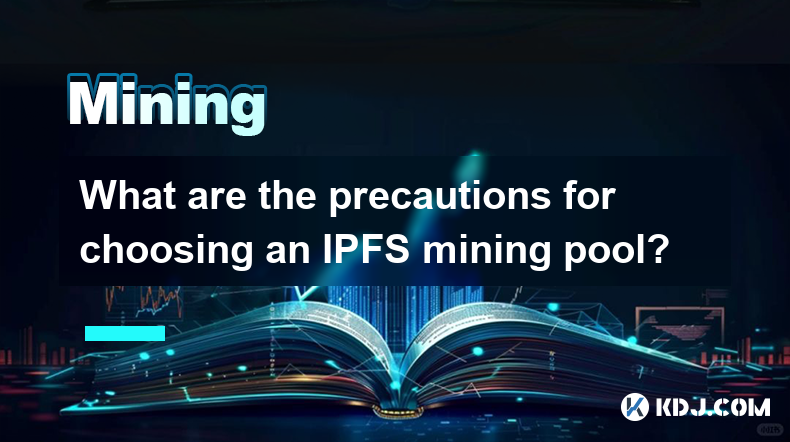
Navigating the IPFS Mining Pool Landscape: Key Considerations
Choosing the right IPFS mining pool is crucial for maximizing your returns and minimizing risks. The decentralized nature of IPFS means there's no central authority to guarantee performance, making careful selection paramount. Many factors influence the suitability of a particular pool, and overlooking them can lead to disappointment. This article explores the key precautions to consider when selecting an IPFS mining pool.
Understanding the Basics of IPFS Mining Pools
Before diving into precautions, it's vital to understand what an IPFS mining pool is. Unlike Bitcoin or Ethereum mining, IPFS doesn't involve solving complex cryptographic puzzles. Instead, IPFS mining (or more accurately, storage provision) involves contributing unused hard drive space to the network. Mining pools aggregate the storage capacity of multiple users, increasing the likelihood of earning rewards. Pools distribute these rewards among participants based on their contribution.
1. Pool Reputation and Track Record:
- Thoroughly research the pool's reputation. Look for reviews and testimonials from other users. Check online forums and social media groups for discussions about the pool's performance, reliability, and payment history. A long-standing pool with positive feedback is generally a safer bet.
- Examine the pool's transparency. Does the pool openly share its statistics, such as the total storage capacity, the number of active miners, and the distribution of rewards? Transparency is a key indicator of trustworthiness.
2. Payment Methods and Frequency:
- Verify the pool's payment methods. Ensure they support your preferred cryptocurrency wallet and payment processor. Some pools may offer multiple options, while others might only support a single method.
- Check the payment frequency. Some pools pay out daily, while others pay weekly or even monthly. Consider your preference and the impact on your overall liquidity. Faster payouts are generally preferable, but they may come with slightly lower rewards.
3. Fees and Minimum Payouts:
- Carefully review the pool's fee structure. Fees can vary significantly between pools, impacting your overall profitability. Understand what fees are charged and how they are calculated. Some pools charge a percentage of your earnings, while others may have fixed fees.
- Determine the minimum payout threshold. A high minimum payout can delay your rewards, especially if you have a smaller storage contribution. Consider the balance between minimizing fees and receiving timely payments.
4. Pool Infrastructure and Technology:
- Assess the pool's infrastructure. A reliable and robust infrastructure is crucial for uninterrupted operation. Look for pools that use high-quality servers and network connections to ensure stability and minimize downtime.
- Understand the pool's technology. Some pools may use advanced techniques to optimize storage efficiency and maximize rewards. Research the pool's technical specifications to ensure they meet your needs.
5. Security and Data Privacy:
- Prioritize security. Choose a pool with strong security measures in place to protect your data and prevent unauthorized access. Look for pools that use encryption and other security protocols.
- Review the pool's privacy policy. Understand how the pool handles your personal information and ensures your data is protected. Transparency and a clear privacy policy are essential.
6. Customer Support and Responsiveness:
- Evaluate the pool's customer support. Choose a pool that offers reliable and responsive customer support in case you encounter any problems or have questions. Look for pools with multiple support channels, such as email, live chat, and a comprehensive FAQ section.
- Check the pool's communication. Does the pool regularly update its users on important announcements, changes, and maintenance? Good communication is vital for keeping informed and resolving issues promptly.
7. Geographic Location and Network Latency:
- Consider the pool's geographic location. Proximity to the pool's servers can reduce network latency and improve performance. Choosing a pool closer to your physical location can potentially increase your earnings.
- Assess network latency. High latency can negatively impact your mining performance and reduce your rewards. Look for pools with low latency connections to ensure optimal performance.
8. Scalability and Future Growth:
- Evaluate the pool's scalability. Choose a pool that can handle future growth and increasing demand. A scalable pool can accommodate your growing storage capacity and ensure consistent performance as the network expands.
- Consider the pool's long-term vision. Does the pool have a clear roadmap for future development and innovation? Investing in a pool with a strong vision for the future can provide long-term benefits.
Frequently Asked Questions
Q: What is the risk of choosing a poorly-managed IPFS mining pool?
A: Risks include delayed or non-payment of rewards, data loss, security breaches, and poor performance due to unreliable infrastructure.
Q: How can I verify the reputation of an IPFS mining pool?
A: Check independent reviews, forums, and social media for user feedback. Look for transparency in their operations and financial reporting.
Q: What are the typical fees associated with IPFS mining pools?
A: Fees vary but often consist of a percentage of your earned rewards or fixed fees. Always check the specific fee structure before joining.
Q: What should I do if an IPFS mining pool stops paying out?
A: Contact their support immediately. If you receive no response or the issue persists, consider reporting the pool to relevant authorities and online communities.
Q: How do I choose between pools with different payment frequencies?
A: Consider your need for liquidity. Daily payouts offer immediate access to rewards, while less frequent payouts may offer slightly higher overall returns due to lower fees.
Q: Is it safe to store large amounts of data on an IPFS mining pool?
A: While IPFS is decentralized, the pool itself manages your data. Carefully evaluate the pool's security measures and reputation before entrusting significant data. Always back up your data independently.
Disclaimer:info@kdj.com
The information provided is not trading advice. kdj.com does not assume any responsibility for any investments made based on the information provided in this article. Cryptocurrencies are highly volatile and it is highly recommended that you invest with caution after thorough research!
If you believe that the content used on this website infringes your copyright, please contact us immediately (info@kdj.com) and we will delete it promptly.
- Global stablecoin supply could surge to $1 trillion by the end of 2025
- 2025-03-29 21:50:12
- XRP Price Continues to Record a Steady Downtrend
- 2025-03-29 21:50:12
- Ever Had That Gut-Punch Moment When a Coin You Ignored Blew Up Overnight?
- 2025-03-29 21:45:12
- The Next Crypto Bull Run Will Be Driven by AI-Powered Meme Coins
- 2025-03-29 21:45:12
- MonkeDAO Adopts a Bitcoin (BTC) Reserve, Signaling a Paradigm Shift in DeFi Integration
- 2025-03-29 21:40:12
- Chainlink Recent Advance Demonstrates Its Increasing Importance Within the Blockchain Universe
- 2025-03-29 21:40:12
Related knowledge
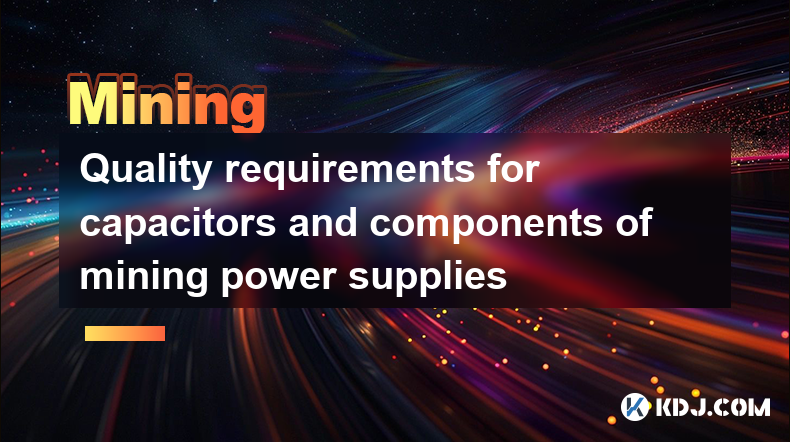
Quality requirements for capacitors and components of mining power supplies
Mar 29,2025 at 02:57pm
The Crucial Role of Power Supply Components in MiningMining cryptocurrencies, especially those using Proof-of-Work consensus mechanisms, demands significant computational power. This translates to a high power consumption, placing immense strain on the power supply units (PSUs) of mining rigs. The reliability and longevity of these PSUs are directly ti...
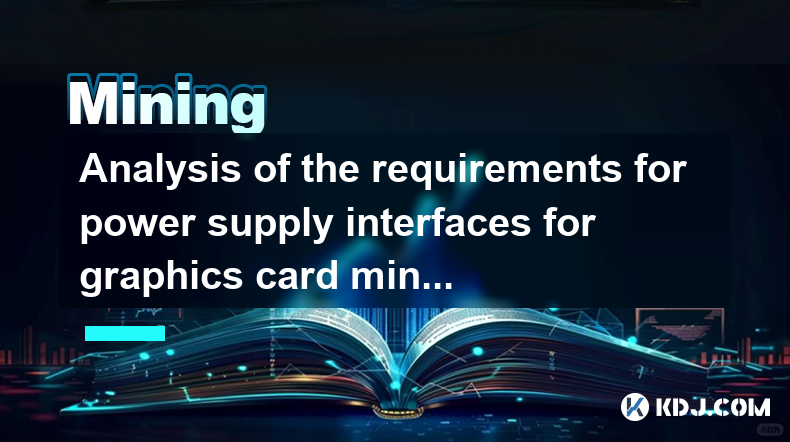
Analysis of the requirements for power supply interfaces for graphics card mining
Mar 29,2025 at 07:35pm
Understanding Power Supply Needs for GPU MiningGraphics card mining, particularly with high-end GPUs, demands substantial power. Understanding the power supply interface requirements is crucial for efficient and safe operation. Different GPUs have varying power consumption profiles and connector types. Failure to meet these requirements can lead to ins...
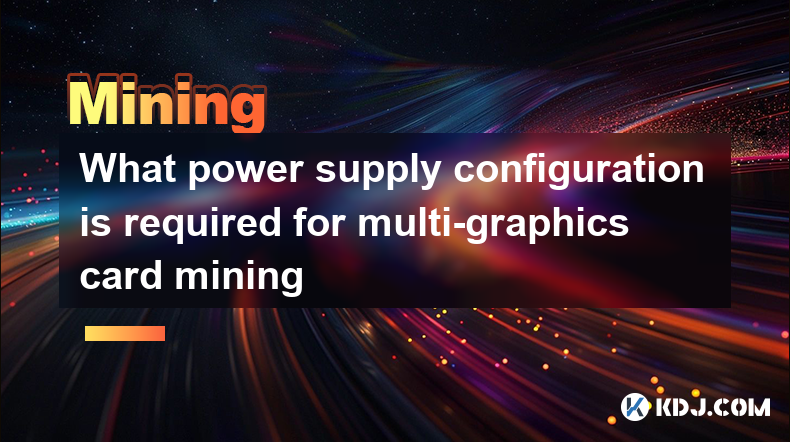
What power supply configuration is required for multi-graphics card mining
Mar 29,2025 at 11:08am
? Power Supply Needs for Multi-GPU Mining RigsMining cryptocurrency, particularly with multiple graphics cards (GPUs), demands a robust and reliable power supply. The power requirements aren't simply the sum of each GPU's TDP (Thermal Design Power). Several other components contribute significantly to the overall energy draw. Understanding these factors...
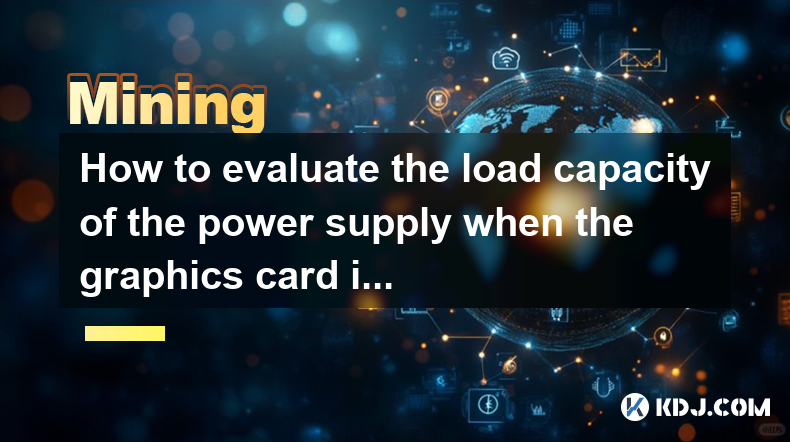
How to evaluate the load capacity of the power supply when the graphics card is mining
Mar 29,2025 at 11:14am
How to Evaluate the Power Supply Load Capacity When the Graphics Card is Mining Understanding Power Consumption in Cryptocurrency MiningCryptocurrency mining, particularly with GPUs, is a power-intensive process. Understanding your power supply's capabilities is crucial to prevent damage to your hardware and ensure stable operation. Insufficient power c...
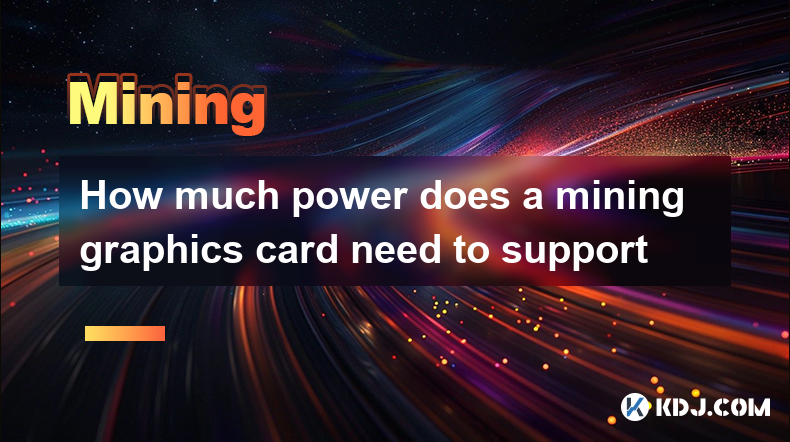
How much power does a mining graphics card need to support
Mar 29,2025 at 04:14pm
? Power Consumption in Cryptocurrency MiningThe power consumption of a graphics card (GPU) used for cryptocurrency mining is a crucial factor determining profitability and operational costs. The power draw isn't a fixed number; it varies significantly depending on several key aspects of both the card itself and the mining operation. Understanding these ...

Profit Model and Equipment Optimization of GPU Mining
Mar 29,2025 at 06:35pm
Understanding the Profitability of GPU MiningGPU mining, particularly for cryptocurrencies like Ethereum (before the merge) and others using similar algorithms, involves using graphics processing units (GPUs) to solve complex mathematical problems, validating transactions, and earning cryptocurrency rewards. The profitability hinges on several intercon...

Quality requirements for capacitors and components of mining power supplies
Mar 29,2025 at 02:57pm
The Crucial Role of Power Supply Components in MiningMining cryptocurrencies, especially those using Proof-of-Work consensus mechanisms, demands significant computational power. This translates to a high power consumption, placing immense strain on the power supply units (PSUs) of mining rigs. The reliability and longevity of these PSUs are directly ti...

Analysis of the requirements for power supply interfaces for graphics card mining
Mar 29,2025 at 07:35pm
Understanding Power Supply Needs for GPU MiningGraphics card mining, particularly with high-end GPUs, demands substantial power. Understanding the power supply interface requirements is crucial for efficient and safe operation. Different GPUs have varying power consumption profiles and connector types. Failure to meet these requirements can lead to ins...

What power supply configuration is required for multi-graphics card mining
Mar 29,2025 at 11:08am
? Power Supply Needs for Multi-GPU Mining RigsMining cryptocurrency, particularly with multiple graphics cards (GPUs), demands a robust and reliable power supply. The power requirements aren't simply the sum of each GPU's TDP (Thermal Design Power). Several other components contribute significantly to the overall energy draw. Understanding these factors...

How to evaluate the load capacity of the power supply when the graphics card is mining
Mar 29,2025 at 11:14am
How to Evaluate the Power Supply Load Capacity When the Graphics Card is Mining Understanding Power Consumption in Cryptocurrency MiningCryptocurrency mining, particularly with GPUs, is a power-intensive process. Understanding your power supply's capabilities is crucial to prevent damage to your hardware and ensure stable operation. Insufficient power c...

How much power does a mining graphics card need to support
Mar 29,2025 at 04:14pm
? Power Consumption in Cryptocurrency MiningThe power consumption of a graphics card (GPU) used for cryptocurrency mining is a crucial factor determining profitability and operational costs. The power draw isn't a fixed number; it varies significantly depending on several key aspects of both the card itself and the mining operation. Understanding these ...

Profit Model and Equipment Optimization of GPU Mining
Mar 29,2025 at 06:35pm
Understanding the Profitability of GPU MiningGPU mining, particularly for cryptocurrencies like Ethereum (before the merge) and others using similar algorithms, involves using graphics processing units (GPUs) to solve complex mathematical problems, validating transactions, and earning cryptocurrency rewards. The profitability hinges on several intercon...
See all articles






















































































